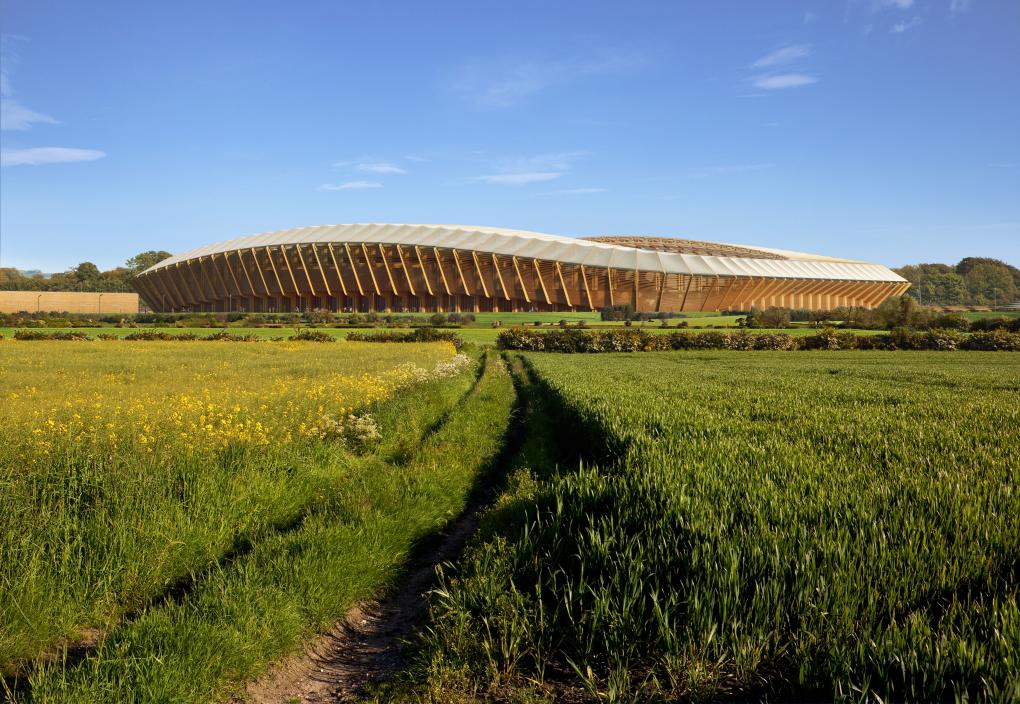Image: The new Forest Green Rovers stadium will be built entirely of wood (Source: Zaha Hadid Architects)
In the coming episodes of his column, Thomas Albinger, Managing Director of Companeer GmbH, will be taking a closer look at aspects of sustainability. This time he deals with certificates and ecological building.
Robert Habeck’s Easter package to accelerate the energy transition also includes a surprise egg for sustainable construction: In the future, a sustainability certificate will be mandatory if the construction of one to five family houses is to be sponsored with public funds.
It is only a matter of time before a similar obligation is formulated for sports facility construction. For a new stadium building, it will then not be sufficient to cover the roof with photovoltaics on a large scale in order to obtain such a sustainability certificate.
After all, “we’re actually hardly allowed to build any more.” This is what Prof. Natalie Essig, who played a key role in developing the sustainability certificate for housing construction, emphasized to ARD. The reason for this, she says, is the enormous amount of gray energy that is tied up in construction, as well as the massive demand for land.
Currently, about 70 hectares of greenfield land are being added every day in Germany – that’s almost 100 soccer fields. And the energy consumed in building a single-family house is so high that it could be used to air-condition and light it for 50 years.
On the other hand, there is massive vacancy. Buildings have become a disposable product, produced from materials that are difficult to recycle, such as concrete. Cement production alone is responsible for two percent of all CO2 emissions in Germany. That is more than the entire air traffic.
There is no reason why new stadiums should not be built using recyclable and climate-neutral materials. It has long been known among experts that wood, for example, is often even more suitable than reinforced concrete as a construction material for large buildings, for roof support structures or for the construction of entire stadiums in many aspects and especially in terms of fire protection.
For example, Forest Green Rovers, which wants to be the greenest soccer club in the world, wants to build its new stadium entirely of wood. When the stadium, designed by Zaha Hadid and approved for construction in 2019, has been finished, I will definitely want to take a look at it. But wait! Shouldn’t I be paying attention to my ecological footprint? And what will happen to the club’s “New Lawn,” which was only renovated in 2006? Okay, those are topics for another time.
This article was published in Stadionwelt INSIDE 2/2022
Contact & Imprint
Companeer GmbH
Parkstr. 22 | 80339 Munich
Phone +49 (89) 21 55 10 31
hello@companeer.com
© 2024 Companeer GmbH
Managing director:
Thomas Albinger
Commercial register:
Munich HRB 202961
